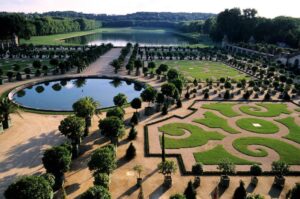
Gardens have always been spaces of tranquility and beauty, providing solace to those seeking respite from the hustle and bustle of city life. However, some gardens transcend the ordinary, embodying the harmonious fusion of nature and architectural brilliance. These architecture designed gardens captivate the imagination, inspiring visitors with their stunning aesthetics, innovative designs, and immersive experiences. In this article, we will explore some of the world’s most remarkable architecture-designed gardens, where art and nature converge to create enchanting landscapes.
The Gardens of Versailles, France: A Timeless Marvel
The Palace of Versailles in France stands as an emblem of grandeur, and its gardens are no exception. Designed by André Le Nôtre in the 17th century, the Gardens of Versailles epitomize the French formal garden style. Stretching over 800 hectares, this masterpiece features meticulously manicured lawns, geometrically aligned parterres, ornate fountains, and symmetrical groves. The garden’s grandeur lies in its expansive perspectives, carefully planned pathways, and the strategic placement of sculptures and architectural elements, such as the Grand Canal and the famous Apollo Fountain.
The Butchart Gardens, Canada: A Symphony of Floral Splendor
Nestled on Vancouver Island in British Columbia, Canada, the Butchart Gardens is a captivating example of transforming a former limestone quarry into a horticultural wonderland. Started by Jennie Butchart in the early 20th century, this garden is a testament to the power of vision and creativity. The Butchart Gardens’ design incorporates a variety of themes, including the Sunken Garden, the Rose Garden, and the Japanese Garden, each with its own distinct atmosphere. Throughout the gardens, visitors are treated to a harmonious blend of vibrant flowers, elegant pathways, and charming architectural accents.
The High Line, USA: Urban Oasis in the Concrete Jungle
In the heart of New York City, the High Line offers a striking example of repurposing urban infrastructure. Once an elevated railway track, this 1.45-mile-long park was transformed into a verdant oasis by the collaborative efforts of landscape architects and designers. The High Line combines nature-inspired plantings, contemporary art installations, and architectural elements to create a unique and immersive experience for visitors. As you stroll along this elevated park, you can admire panoramic views of the cityscape, relax in carefully designed seating areas, and appreciate the innovative integration of green spaces amidst the bustling metropolis.
The Alhambra, Spain: Moorish Splendor Amidst Gardens
Situated in Granada, Spain, the Alhambra is a UNESCO World Heritage Site renowned for its exquisite Islamic architecture and magnificent gardens. The Generalife, the Alhambra’s garden complex, showcases the delicate interplay between water, greenery, and architectural design. A Los Angeles architectural projects leader told me the gardens feature intricate fountains, reflecting pools, geometrically patterned walkways, and fragrant flower beds. As you explore the Generalife, you’ll be transported back in time, marveling at the ingenious use of water as it cascades through the gardens, bringing coolness and serenity to this arid region.
The Singapore Botanic Gardens, Singapore: A Tropical Paradise
Enveloped by the bustling cityscape, the Singapore Botanic Gardens is a testament to Singapore’s commitment to greening and biodiversity. This sprawling 160-year-old garden is not only a lush oasis but also a prime example of garden design excellence. With diverse plant collections, themed gardens, and architectural features, such as the iconic National Orchid Garden, visitors are treated to a multisensory journey through Singapore’s rich botanical heritage. The Singapore Botanic Gardens seamlessly combines artful landscaping, historical landmarks, and scientific research, making it a treasure trove for nature enthusiasts and garden lovers.
Conclusion
Architecture-designed gardens are more than just green spaces; they are living works of art that bridge the gap between nature and human creativity. The Gardens of Versailles, the Butchart Gardens, the High Line, the Alhambra, and the Singapore Botanic Gardens are among the world’s most outstanding examples of garden design. Through their meticulously crafted landscapes, captivating architecture, and thoughtful integration of natural elements, these gardens inspire awe, evoke emotions, and provide a sanctuary where visitors can reconnect with the beauty of the natural world. In these exceptional spaces, the boundaries between art and nature blur, inviting us to explore and appreciate the enchanting intersection of architecture and gardens.

